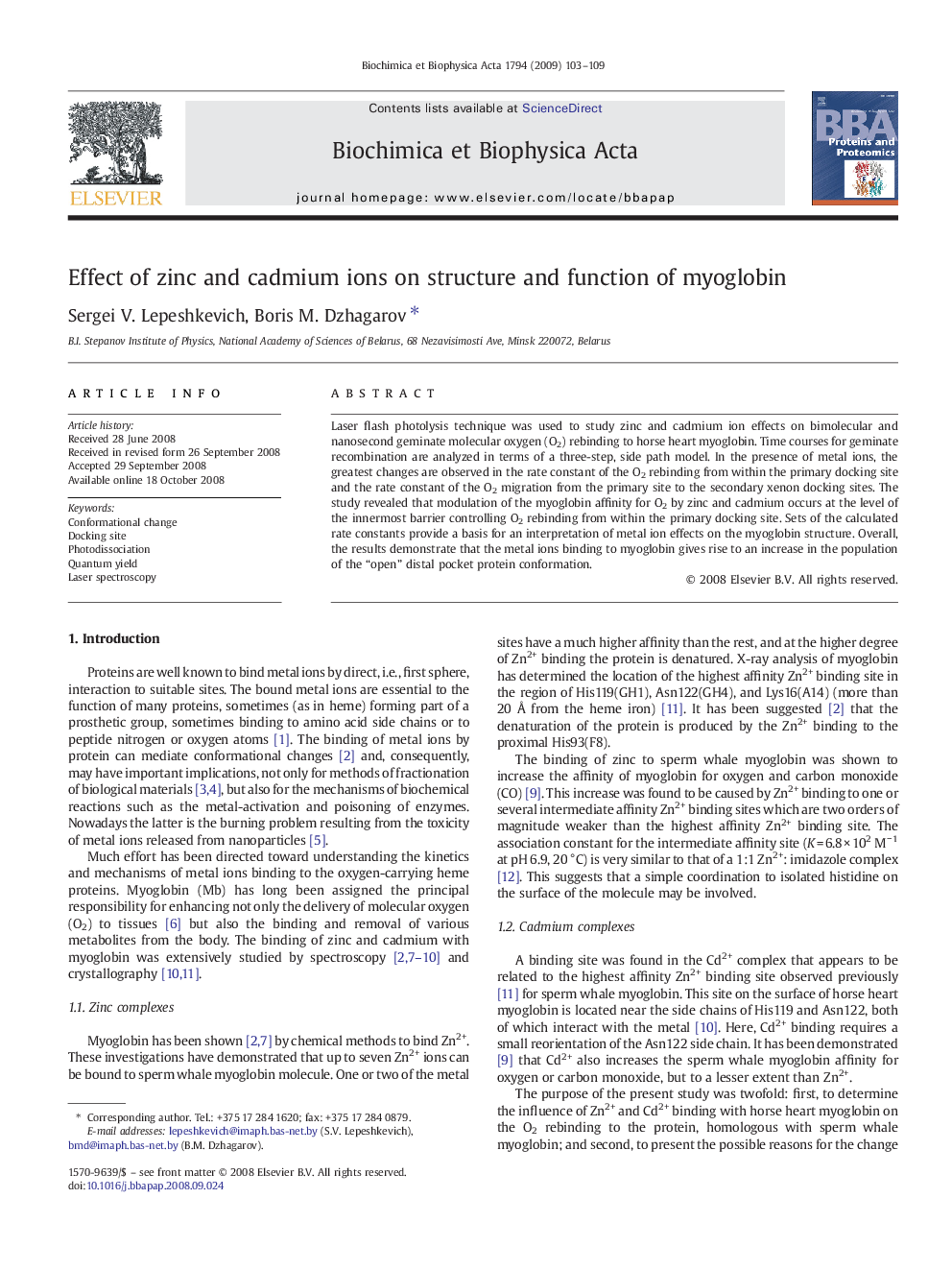| Article ID | Journal | Published Year | Pages | File Type |
|---|---|---|---|---|
| 1178162 | Biochimica et Biophysica Acta (BBA) - Proteins and Proteomics | 2009 | 7 Pages |
Laser flash photolysis technique was used to study zinc and cadmium ion effects on bimolecular and nanosecond geminate molecular oxygen (O2) rebinding to horse heart myoglobin. Time courses for geminate recombination are analyzed in terms of a three-step, side path model. In the presence of metal ions, the greatest changes are observed in the rate constant of the O2 rebinding from within the primary docking site and the rate constant of the O2 migration from the primary site to the secondary xenon docking sites. The study revealed that modulation of the myoglobin affinity for O2 by zinc and cadmium occurs at the level of the innermost barrier controlling O2 rebinding from within the primary docking site. Sets of the calculated rate constants provide a basis for an interpretation of metal ion effects on the myoglobin structure. Overall, the results demonstrate that the metal ions binding to myoglobin gives rise to an increase in the population of the “open” distal pocket protein conformation.
